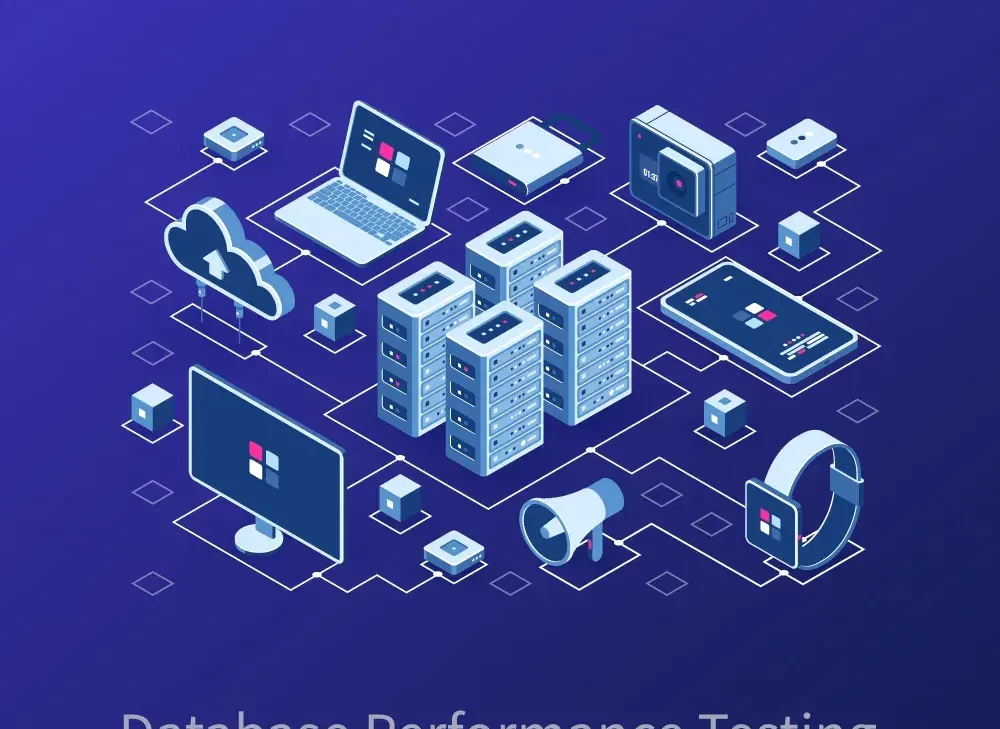
Database performance testing is a crucial aspect of ensuring that your software application or system functions efficiently and meets its performance goals
DATABASE PERFORMANCE TESTING
Database performance testing is a crucial aspect of ensuring that your software application or system functions efficiently and meets its performance goals. A poorly performing database can significantly impact the overall performance of your application, leading to slow response times, increased resource usage, and unhappy users. Here are the key aspects and best practices of database performance testing:
Define Clear Objectives:
- Start by defining specific performance objectives and metrics. Determine what “good” performance means for your database. Common metrics include response times, throughput, and resource utilization.
Select Appropriate Tools:
- Choose database performance testing tools that align with your database technology and testing requirements. Popular database performance testing tools include Apache JMeter, SQL Server Profiler, MySQL Enterprise Monitor, and Oracle Real Application Testing.
Data Preparation:
- Create realistic and representative datasets for testing. Ensure that the data size and distribution mimic real-world scenarios. Consider using data anonymization techniques to protect sensitive information.
Test Environment Setup:
- Set up a dedicated test environment that mirrors the production environment as closely as possible. This includes hardware, database software, configurations, and network conditions.
Baseline Testing:
- Establish a performance baseline by running tests under normal or expected conditions. This helps you understand the database’s baseline performance before introducing load or stress.
Load Testing:
- Simulate real user interactions by running load tests. This involves executing a set of database queries and transactions while gradually increasing the number of concurrent users or requests. Measure response times and throughput.
Stress Testing:
- Assess how the database handles extreme conditions by running stress tests. Introduce excessive load, concurrent users, or complex queries to identify performance bottlenecks and breaking points.
Scalability Testing:
- Determine the database’s scalability by testing its ability to handle increased loads. Evaluate whether adding more resources, like CPU or memory, or scaling out to multiple database instances, improves performance.
Concurrency Testing:
- Evaluate how the database manages multiple concurrent transactions and queries. This ensures data consistency, isolation, and resource contention handling.
Resource Monitoring:
- Continuously monitor resource usage, including CPU, memory, disk I/O, and network bandwidth, during tests. Identify any resource bottlenecks that may affect performance.
Query Optimization:
- Analyze and optimize database queries to ensure they are efficient and well-indexed. This is especially important for frequently executed queries.
Indexing and Partitioning:
- Implement appropriate indexing and data partitioning strategies to enhance query performance and data retrieval.
Connection Pooling:
- Implement connection pooling mechanisms to efficiently manage database connections and reduce connection overhead.
Caching:
- Utilize caching mechanisms to reduce the need for frequent database queries, particularly for read-heavy applications.
Failure and Recovery Testing:
- Test the database’s ability to recover from failures, including hardware crashes and data corruption. Implement backup and recovery procedures and ensure they work as expected.
Security Testing:
- Include security testing to ensure that the database remains secure while under stress. Evaluate how security measures impact performance.
Documentation and Reporting:
- Maintain detailed documentation of test plans, results, and any optimizations made. Report findings and recommendations to stakeholders.
Database performance testing is an iterative process that should be performed regularly, especially when making significant changes to your application or database schema. By identifying and addressing performance issues proactively, you can ensure that your database operates efficiently and meets the demands of your application’s users.


